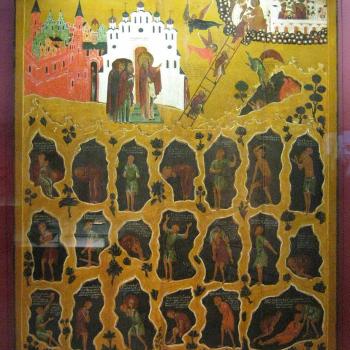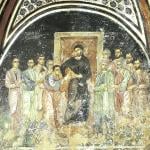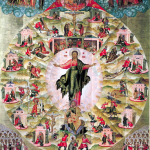Warning: This story is not nearly as interesting as it would have been just a few years ago.
When I toured the Vatican Secret Archives in September 2004, the thousands of documents and historical artifacts housed therein were rarely seen by anyone but the Pope and his Curia, and Vatican scholars. Since that time, Rome has embraced the 20th century, and most of the collections housed in the Vatican Libraries, including the “Secret Archives,” have been made available on-line for all to see.



That was not the case just a few years ago, though, and this was One Really Special Opportunity! As conference director for Legatus, the international association of Catholic CEOs, I organized a trip that was part pilgrimage, part back-lot tour; and one of the highlights for our group was a private tour of the Secret Archives with the Vatican Library’s general secretary, Dr. Luca Carboni.
With the holidays coming, I’ve been organizing some photo files—and I thought I’d share some of the rare exhibits on display inside the walls of Vatican City.
PHOTO #1 – THE HALLOWED HALLS. Boxes and binders and bins, filled with thousands of documents, line 85 linear kilometers of shelves in the Vatican Archives. Why did it take the Vatican so long to make their collections public? That’s why!
PHOTO #2 – Dr. Luca Carboni, then general secretary of the Vatican Library, conducted a personal tour for our group. I believe he’s directing our attention to one of the 21 known complete copies of the Gutenberg Bible.
PHOTO #3 – Parchment documents of State were often signed by all the nobles of a kingdom. Here the red threads and wax seals attest to the signers’ agreement with the contents.

PHOTO #4 – BILL OF DIVORCEMENT OF HENRY VIII, WITH 85 RED WAX SEALS. Here, ladies and gentlemen, is Ground Zero of the Protestant Reformation—the Address of the Peers of England to Pope Clement VII asking for the annulment of King Henry VIII’s marriage to Catherine of Aragon. You remember the story: Henry VIII and Catherine of Aragon were Roman Catholic, and the Church forbade divorce. After 23 years of marriage, Catherine had borne no male child who could be heir to the throne; and an impatient Henry hoped that a new wife might bear sons who would assume the throne. Since the Catholic Church held firm to the words of Jesus (“What God has joined together, let no man set asunder”) and divorce was forbidden, Henry petitioned Pope Clement VII in Rome for an annulment — which essentially declares that the marriage never existed.
But true to Catholic teaching, Pope Clement denied an annulment. Henry broke away from the Roman Catholic Church by naming himself the Supreme Head of the Church of England (thereby rejecting the Pope’s authority), divorced Catherine, and married Anne Boleyn. Anne failed to produce a male heir and was beheaded after three years of marriage.














